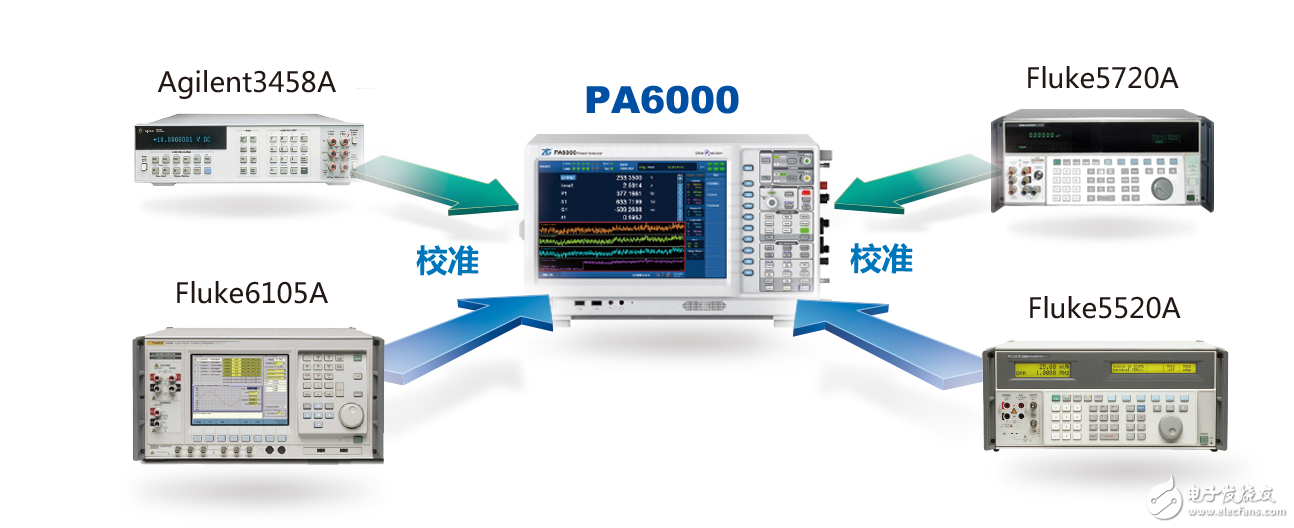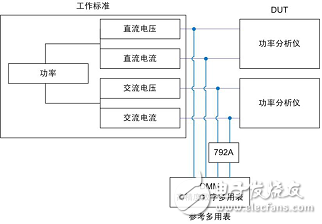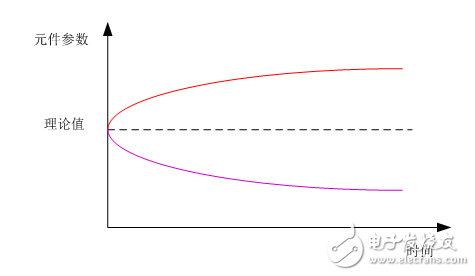It is well known that when electronic measuring instruments are used for measuring activities, the aging of the instrument will be affected by the natural environment, such as dust and temperature. Sometimes the instrument will have errors. Only through regular inspection can the instrument be found and the accuracy of the measurement results can be guaranteed.
As a leading enterprise of domestic electronic measuring instruments, Zhou Ligong Zhiyuan Electronics has an independent and complete instrument calibration test system, which can effectively and reliably calibrate all kinds of instruments when they are shipped from the factory and later. The power analyzer is taken as an example to uncover the veil of the remote electronic instrument calibration test system.
Calibration tool
We all know that in order to produce high-precision mechanical parts, it is necessary to use a higher precision working machine. The same is true for electronic measuring instruments. To calibrate the accuracy of the two-fidelity PA6000 power analyzer, we chose the industry's most sophisticated Fluke calibrator and the Agilent Octagonal Digital Multimeter. As shown in Figure 1
Agilent3458A: The world's recognized high-performance digital multimeter benchmark with eight-and-a-half-digit precision and high-speed digital conversion capability that provides calibration laboratory accuracy levels and fast test system throughput.
Fluke6105A: A high-performance power power standard source that reproduces power waveforms, distortion events, and electrical phenomena such as harmonic distortion, modulated harmonics, interharmonics, flicker, and sudden rise and fall, and can occur simultaneously if needed. The power analyzer's various test functions are calibrated by this calibration instrument.
Fluke5720A: The versatile high-precision calibrator has been the standard for calibrators worldwide, providing the accuracy of calibrating a five-and-a-half-to-seven-digit digital multimeter to calibrate the accuracy of a PA6000. Thousands of Fluke 5700A calibrators are in use worldwide.
Fluke5520A: Multi-product calibrator can directly output voltage and current, output various voltage and current waveforms, and output voltage, current or dual voltage for phase control to simulate DC and AC power. The voltage, current, and phase accuracy of the PA6000 can be calibrated.

Figure 1 Zhou Ligong Zhiyuan Electronic Calibration Instrument
Calibration process
With a full range of high-precision calibration equipment, a professional calibration process is required to calibrate high-precision electronic instruments to maximize the utilization of calibration equipment. It is well known that a power analyzer is a high-bandwidth, high-precision measuring instrument that accurately measures voltage, current, and power parameters. In order to ensure the accuracy of the power analyzer measurement, it needs to be perfectly calibrated using high-precision standard sources and measuring instruments, covering DC voltage, DC current, AC voltage, AC current and power signal measurement.
As shown in Figure 2, the standard source is used to output standard DC voltage, DC current, AC voltage, and AC current. Connected to it is the power board of the power analyzer under test, and the AC-DC conversion standard is connected with a high-precision digital multimeter for comparison. Among them, the high-precision digital multimeter can directly calibrate the DC signal, and the AC signal is converted into a DC signal by the Fluke 792A AC-DC conversion standard. It is also suitable for calibration with a high-precision digital multimeter. This ensures the measurement accuracy of the power analyzer.

Figure 2 Power analyzer calibration diagram
Calibration cycle
Headphone enthusiasts know that the newly purchased headphones need a downtime process, that is, some components such as transistors, integrated circuits, and capacitors are unstable when the electrical parameters are new, and they can be gradually stabilized after a period of use. The same is true for electronic measuring instruments, and the technical specifications after calibration at the factory will be reduced due to factors such as temperature and time drift. In order to ensure long-term stability of the instrument, we need periodic calibration.
1, initial accuracy
After the machine is produced and the aging is completed, the measured value and the value of the standard source will be much different. All need to be calibrated, and the displayed value of the instrument is adjusted to the same value as the standard source. Why is there a deviation before calibration? Because the amplification factor, reference voltage, etc. we designed are not theoretical values, there is an initial deviation, so calibration is required.
2, time drift
The accuracy and other parameters of most electronic instruments, including electrometers, picoammeters, nanometers, digital multimeters, SMUs, and SourceMeter instruments, vary over time, regardless of whether the device is working or not. Due to this change, the instrument's specifications usually indicate a time interval. Exceeding this time interval does not guarantee the accuracy of the instrument. This time interval is given in the instrument's specifications, usually 90 days or 1 year.
As shown in Fig. 3, as time shifts, the component parameter characteristics gradually deviate from the theoretical value, and the longer the time, the more stable the deviation from the theory. Fluke, a well-known manufacturer of calibration instruments, said that the calibrator used in the lab for ten years is very good. If the selling price is a few or even dozens of times more expensive than the one just produced, it is generally not sold. It can be seen that the more accurate the electronic instrument is, the longer the calibration cycle can be.

Figure 3 component parameter time drift
Zgar International (M) SDN BHD , https://www.oemvape-pen.com